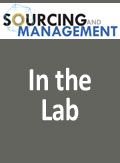Drug Shortage Survey Points to Pharma’s Supply Chain Management Weaknesses
PTSM: Pharmaceutical Technology Sourcing and Management
Research by Pew Charitable Trust and ISPE suggests that inability to forecast internal demand, and poor partner alignment are among the reasons for drug shortages
In January, 2017, the Pew Agency for Charitable Trusts and the International Society for Pharmaceutical Engineers (ISPE) released results of a 10-company survey on the reasons for drug shortages. Focusing on factors other than quality, and geared to the pharmaceutical operations executive, the survey found that better supply chain management and partner alignment are critical to preventing future drug shortages.
Between 2011 and 2014, the report says, 456 drugs, most of them sterile injectables, have been in short supply. Shortages have forced healthcare providers and patients to switch to alternative, and in some cases, less effective treatments. These product substitutions, the report projects, have resulted in an additional $230 million in costs for hospitals and treatment centers.
Surveyed pharmaceutical companies identified gaps within their supply chains, and areas that need to be strengthened in order to avoid future shortages. Many respondents say that they do not implement best practices in supply chain management, such as maintaining backup supplies, sourcing from multiple suppliers, or increasing manufacturing shifts, in any standardized or consistent manner. Instead, they tend to choose strategies based on the individual products, investment requirements, manufacturing complexity, and length of time required.
Eight respondents suggested that having group purchasing organizations guarantee orders of a specific size annually, would prevent shortages of lower margin, lower volume product, by offering incentives for manufacturers to invest in new manufacturing lines or backups. Five of the 10 respondents said that exclusive contracts would provide an incentive to develop better shortage prevention practices.
Respondents criticized industry practices for sales and operations planning, inventory management, and forecasting. Eight said their programs required better coordination between the groups communicating demand and those needed to produce the drug. They also suggested the need to improve demand forecasting, crossfunctional interaction, and collaboration with group purchasing organization. Better risk monitoring and mitigation were mentioned as areas for improvement.
Respondents also called on companies to improve internal processes and communication between sales departments and manufacturing and operations.
Four of these companies said they needed improvements in the accuracy and timeliness of information that they receive about shortage durations and the number of manufacturers looking to enter or exit the market. Better intelligence would allow them to anticipate unexpected market demand and make decisions about the investments needed to address shortages.
Regulatory concerns, and the cost of having to submit supplemental filings, were also cited as a damper on expanding or modernizing.
“There is no economic reason to continue manufacturing products that have low volumes and margins, but we do so to protect patients,” said one respondent, an unnamed product manager for a large pharmaceutical company who was quoted in the survey.
“But we can’t do more to protect against shortages because we don’t have accurate information on whether the competition will return and thereby reduce the value of our investment… For legacy products with low margins and low volumes, we have to know what the competition is doing so we can plan better and ensure a constant and reliable supply. Without that knowledge, we won’t make the investments needed.”

Pharmaceutical Tariffs Are Imminent: How Industry is Bracing for Impact
April 16th 2025On April 14, 2025, the Trump Administration launched a national security-driven investigation into pharmaceuticals, a move that will likely result in tariffs being placed on pharmaceutical drugs, ingredients, and other components that are imported from outside of the United States.
Drug Solutions Podcast: A Closer Look at mRNA in Oncology and Vaccines
April 30th 2024In this episode fo the Drug Solutions Podcast, etherna’s vice-president of Technology and Innovation, Stefaan De Koker, discusses the merits and challenges of using mRNA as the foundation for therapeutics in oncology as well as for vaccines.